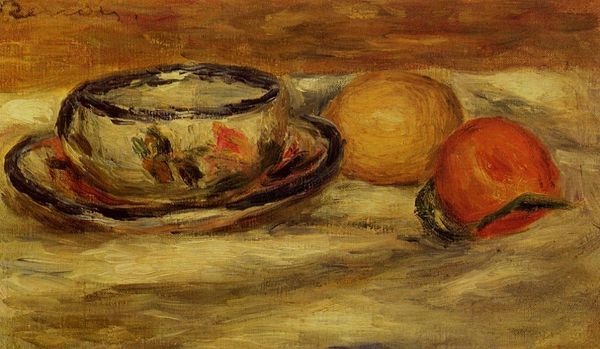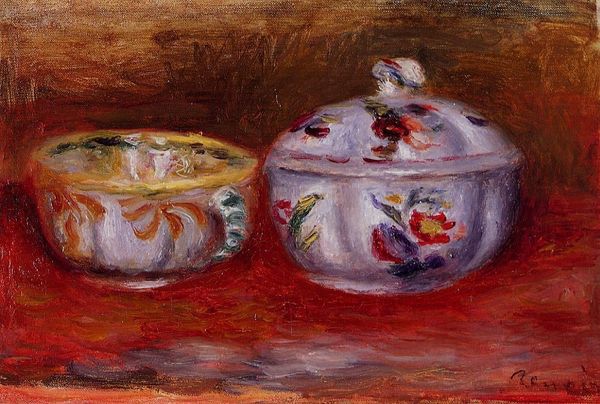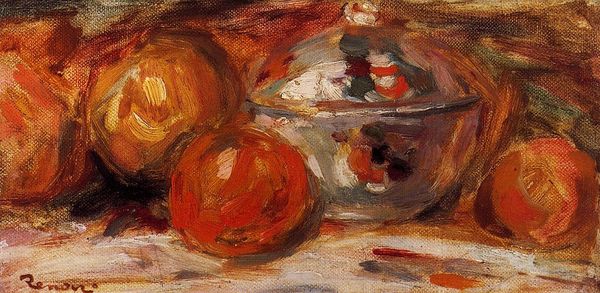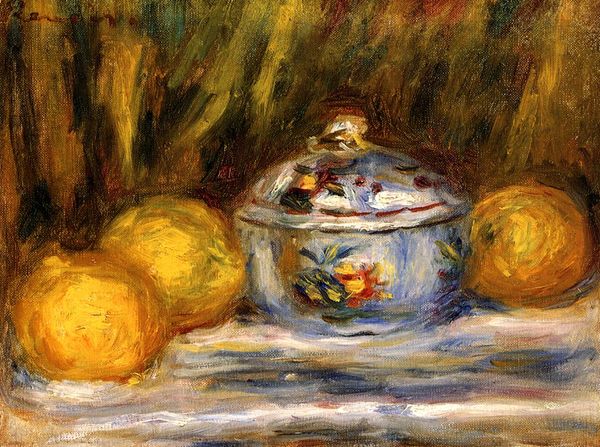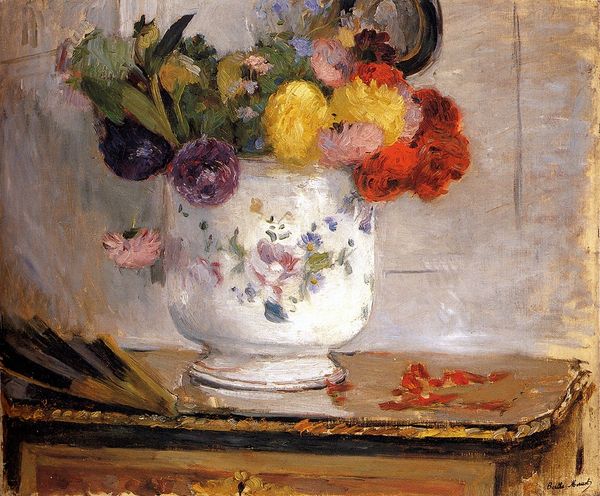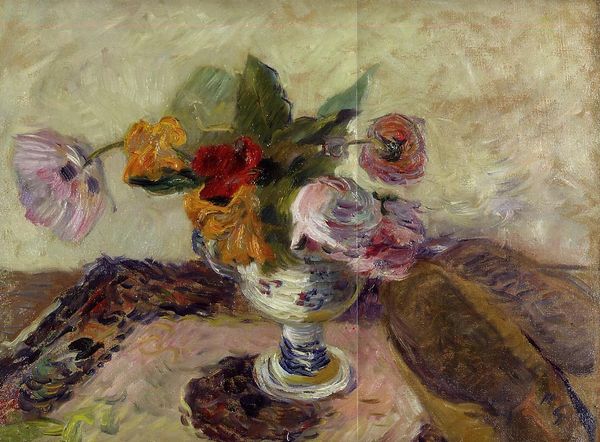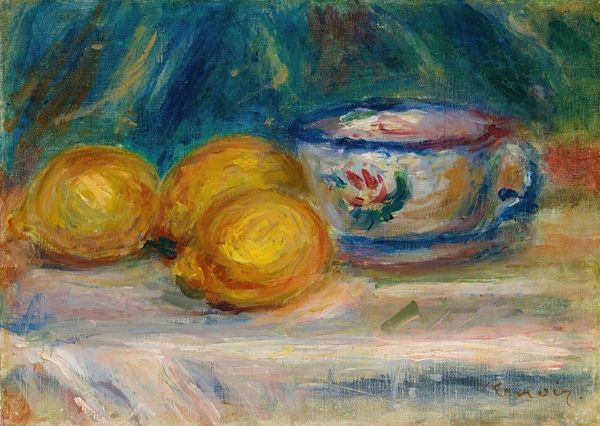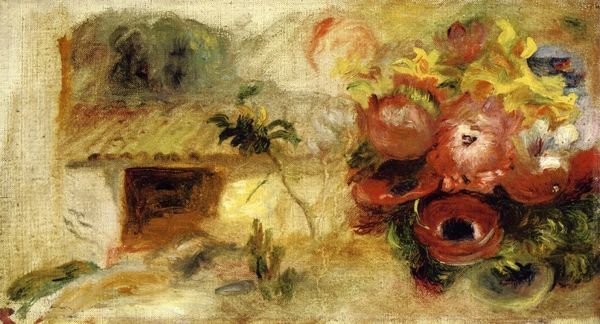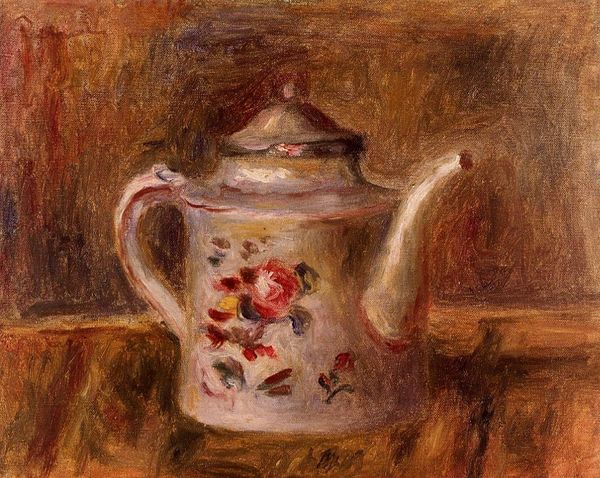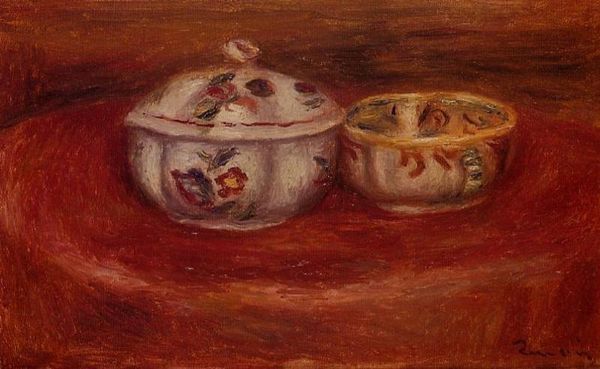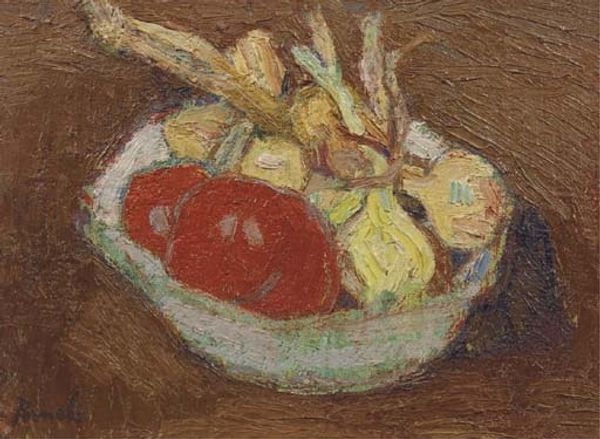
Copyright: Public domain
Editor: Here we have Renoir’s "Sugar Bowl," an oil on canvas painting from 1911. It’s smaller than I expected. The soft colors create a warm and comforting mood. How do you see this piece through a formal lens? Curator: What strikes me immediately is the interplay of light and texture. Notice how Renoir employs broken brushstrokes, almost dissolving the forms into a tapestry of color. The sugar bowl isn't sharply defined, yet we perceive its volume and the delicate floral pattern. The materiality of the paint itself, its thickness and layering, become a central subject. What do you make of the color palette? Editor: It’s very muted. The pinks and greens of the roses are softened by the creamy whites and browns of the background. It all feels very harmonious and balanced. Curator: Exactly. The restricted palette, dominated by earth tones and pastel shades, reinforces the unity of the composition. Consider also the geometry—the circular form of the bowl is echoed in the roundness of the roses. Are you perceiving underlying patterns in the artwork's composition? Editor: Now that you mention it, I do. The way he balanced the light and shadows almost make it feel more like an abstract exploration than a still-life. I never considered the structural components of Impressionism before. Curator: Indeed. Renoir’s focus shifts from precise representation to exploring the intrinsic qualities of painting itself – color, texture, and form. And with all those things working together, that's how the object on the canvas becomes the vessel for artistic expression. Editor: I’ve never really broken down a painting into such basic formal components. Looking at "Sugar Bowl" now, I am rethinking the essence of what art communicates and the techniques that support that objective. Curator: Precisely, focusing on these qualities enhances your appreciation of the artist's intentions and the work’s impact.
Comments
No comments
Be the first to comment and join the conversation on the ultimate creative platform.


